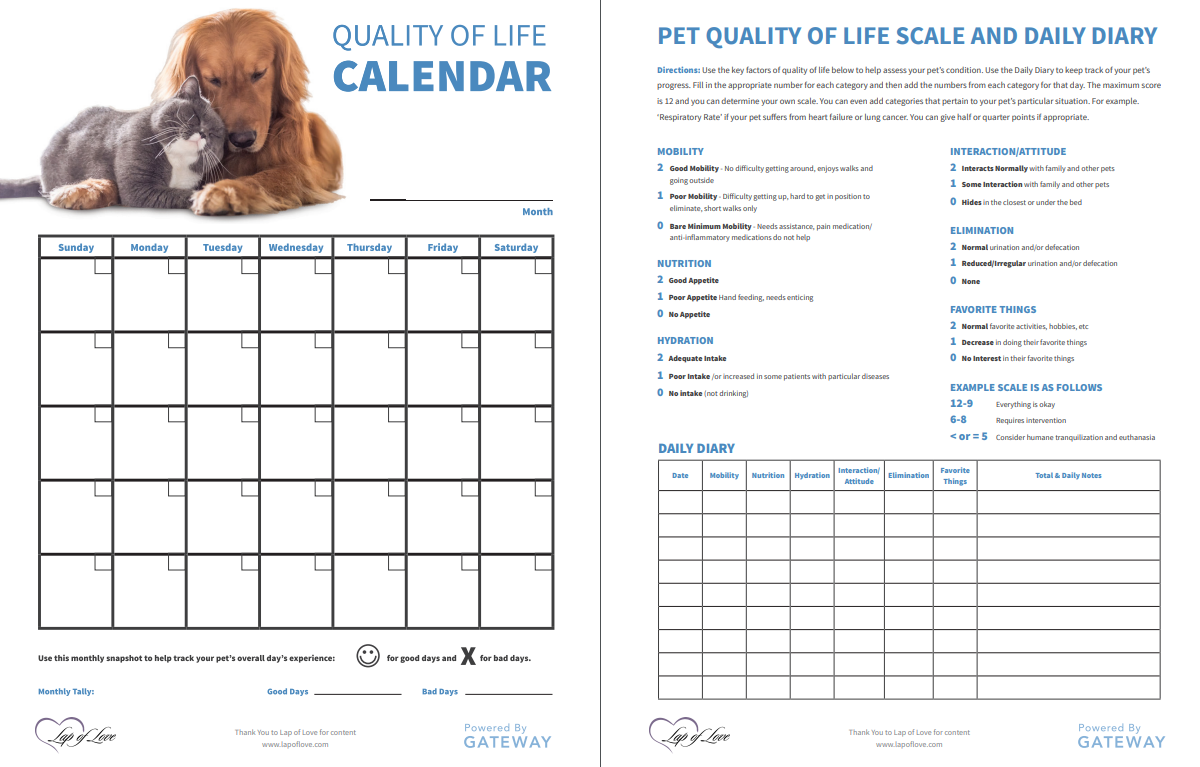Quality of Life
As difficult as it may be, decisions about your pet’s end-of-life care should be thought about early in the process, when your mind is clearer, and you are not facing a crisis.
Determining a pet’s quality-of-life is often used to make end-of-life decisions. It’s important to remember that each pet is an individual – what may be considered poor quality of life in one pet (such as lying around all day) may be normal for another. The “HHHHHMM Scale” and “Pet Quality of Life Calendar & Daily Diary” below, can be used at home to help you assess your pet’s quality of life. You can access printable versions of these documents by clicking on the green text above.
Remember, we are here to help – as your veterinary team we are a good resource to help you know objectively when it’s time.

